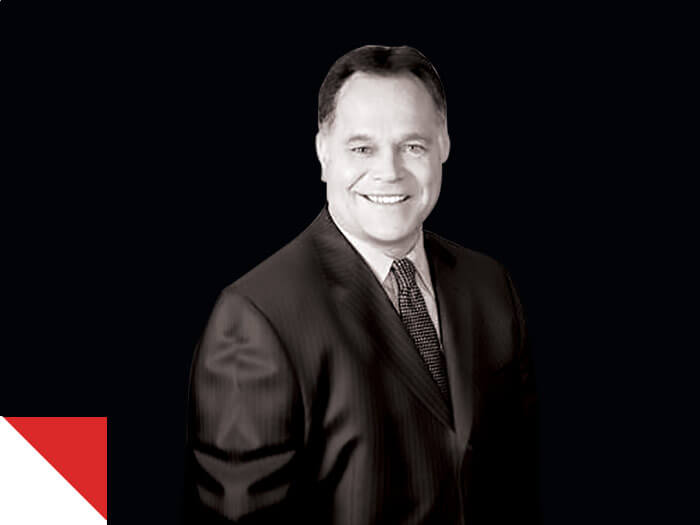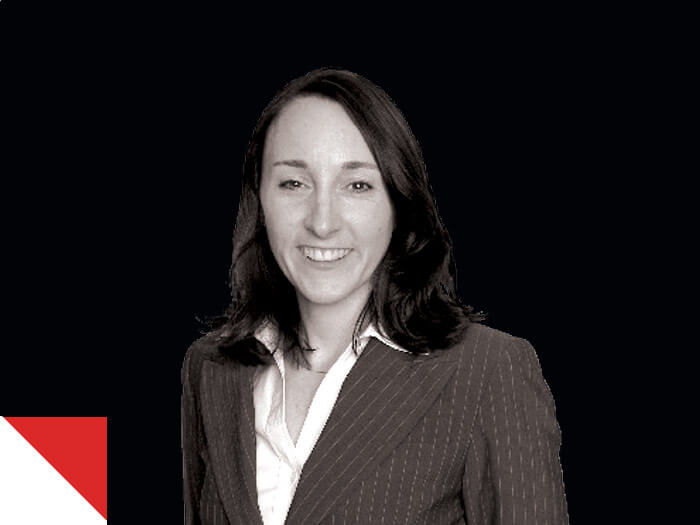
How dirty money is putting Canada’s CPAs at risk
 AML experts say that robust beneficial ownership rules—something for which CPA Canada has vigorously advocated—are critical in the war against the concealment of crime proceeds and tax evasion (Illustration by Noma Bar)
AML experts say that robust beneficial ownership rules—something for which CPA Canada has vigorously advocated—are critical in the war against the concealment of crime proceeds and tax evasion (Illustration by Noma Bar)
In October 2016, fraud investigators with the Vancouver Police Department (VPD) began investigating a company called PacNet, which was headquartered in an office building on Howe Street in the central business district. The firm, owned and operated by a small group of people connected by marriage and family ties, had provided payment processing services since the late 1990s.
The VPD became interested in PacNet because it believed that some of the company’s customers were con artists specializing in fraudulent direct mail schemes. Some of its payments had surfaced in suspicious transaction reports filed with FINTRAC, the federal money laundering and terrorist financing watchdog. Investigators believed that PacNet was processing payments for large numbers of direct mail solicitation schemes and charging commissions on those payments before forwarding the net amounts to its clients, involving hundreds of millions of dollars.
PacNet, investigators alleged, was a ‘laundromat,’ with ties to various U.S. fraud artists, among them a California man named Tully Lovisa, who had been ordered to pay $15.4 million in a lawsuit initiated by the Federal Trade Commission over highly deceptive direct-mail prize schemes. U.S. officials, in fact, had designated PacNet as a “transnational criminal organization.”
In early 2018, B.C.’s Director of Civil Forfeiture began the process of recovering funds collected by PacNet in what was described as a “predatory and unlawful” direct mail scheme. The Director alleged “that PacNet had processed payments relating to millions of such fraudulent and deceptive multi-page solicitations sent to hundreds of thousands of victims and potential victims throughout Canada, the United States and the world.” Then, in June 2019, the U.S. Department of Justice charged the firm’s principals with fraud, conspiracy and other crimes that could bring jail terms of up to 20 years. (As of Pivot’s deadline, the case has yet to be resolved.)
“We have known the issues relating to money laundering dating back to the early ’90s and our alarms went unanswered.”
Money laundering, of course, is not a new topic, but the stakes are changing rapidly as various jurisdictions seek to clamp down on the torrent of dirty money swirling around the globe, estimated to be worth about 3.6 per cent of global GDP. The highest-profile activity involves laundering the proceeds of drug or sex trafficking. Terrorist financing involves the flow of funds, often across borders, into the hands of terrorists. But with less profile, hard-to-track invoice fraud and trade-based money laundering, according to evidence presented earlier this year at the Cullen Commission hearings in B.C., could account for the disappearance of $1 trillion each year from the international import/export economy.
The scale of illegal global currency flows distorts economic indicators, presents risks to firms and professionals that may not realize their role in a wider, possibly international, scheme, and erodes trust in finance and transaction systems. Societies, economies and those most vulnerable the world over are harmed throughout.
As money laundering and terrorist financing expert José Hernandez, CEO of Ortus Strategies, notes, the British Columbia government estimated $46.7 billion was laundered in Canada in 2018, with B.C. accounting for $7.4 billion. As much as three-quarters of that came through the B.C. real estate market. “Money launderers seek refuge in the strong brands of financial institutions, respected professionals such as lawyers and accountants and, above all, prosperous, stable countries like Canada,” he wrote in a CPA Canada blog post. “In so doing, they erode the credibility of institutions and individuals.”
Since 2016, the United Kingdom and the European Union have moved to compel far more disclosure of owners and shareholders as a means of closing off loopholes that have allowed criminals to move funds through numbered accounts registered in places like the Cayman Islands and the British Virgin Islands.
The U.S. Congress in January enacted bipartisan reforms to anti-money laundering (AML) laws, requiring all corporations—and not just banks, as was previously the case—to disclose beneficial ownership information to the Treasury Department. “This is the most significant piece of AML legislation since the Patriot Act 20 years ago,” Daniel Stipano, a veteran U.S. regulator and AML legal expert, told The Financial Times. “It helps bring the whole regime into the 21st century.”
This long-awaited legislative move comes at a time when there’s been an explosion of identity theft, phishing and new types of online scams as the pandemic-afflicted global economy moves increasingly to digital platforms.
 Don Perron, managing director of Froese Forensics Partners (Image provided)
Don Perron, managing director of Froese Forensics Partners (Image provided)
The U.S. rule changes, experts predict, will prompt money-laundering networks to seek new safe harbours. Some, in fact, worry that Canada may become more of a target than it already is. The American law, notes Don Perron, a former Ontario Provincial Police financial crime investigator and managing director of Froese Forensics Partners, “will shift a lot of these activities to Canada.” Perron says our laws have traditionally favoured privacy protection and over-enforcement. “That is typical of who we are,” he adds. “Canada is always two or three steps behind.”
Which is not to say there’s been no movement here. After the international Financial Action Task Force, a global AML and counter-terrorist funding watchdog, called out Canada in 2016 for lacklustre enforcement, inadequate investigative powers for FINTRAC and “significant loopholes” in the regulatory framework, the federal government began strengthening the rules, introducing amendments to the “Proceeds of Crime (Money Laundering) and Terrorist Financing Act,” including stricter beneficial ownership reporting requirements that are coming into effect in June, 2021. Beyond these regulation changes, Ottawa last year held a national consultation on whether to make beneficial ownership information accessible by means of a public registry (or registries.)
What’s really upped the ante in B.C., however, have been in-depth probes by former RCMP investigator Peter German on money laundering through the province’s casinos and the residential real estate sector, as well as retailers of jewelry and luxury cars. Of note, the purchase of luxury vehicles does not need to be reported to FINTRAC and the probes showed fraudulent PST refund claims worth tens of thousands of dollars per vehicle. As German’s investigation in 2019 reported, “fewer than 100 vehicles a year received the PST refund [before 2014]. In 2016, the PST was rebated on 3,674 vehicles.” The investigation also noted the use of “strawmen” buyers, used luxury car dealers with extensive criminal records and purchases made with bags of cash.
“Since 2013,” German’s team concluded, “almost $85 million in PST refunds have been paid by government for the export of vehicles. The source and destination of funds for the buyers and sellers, and any income tax reporting by any of these individuals or entities, is unknown.”
Other target areas include white-label bank machines, unregulated mortgage lenders, precious metal dealers, trust accounts, notaries and crypto-currency exchanges, as well as dubious tuition fee refunds claimed for international students. In B.C., a public inquiry into money laundering, commonly referred to as the Cullen Commission, delved even deeper, probing activities such as the laundering of profits from narcotics trafficking.
The role of accountants is also coming under increased scrutiny. A 2018 federal discussion paper on “gaps” in the regime—which led to a number of legislative and regulatory changes—examined the exposure of what it calls designated non-financial businesses and professions to participants in the money-laundering world. The paper noted that accountants can become involved in “high-risk” activities that don’t necessarily involve reportable cash transactions, such as “. . . managing a client’s money, security or other assets (e.g. savings and securities accounts).” It is important to note that if they are involved in moving money for clients, CPAs are required to report suspicious transactions to FINTRAC.
 Jennifer Fiddian-Green, a national partner in Grant Thornton’s forensics and dispute resolution practice (Image provided)
Jennifer Fiddian-Green, a national partner in Grant Thornton’s forensics and dispute resolution practice (Image provided)
AML experts say that robust beneficial ownership rules—something for which CPA Canada has vigorously advocated—are critical in the war against the concealment of crime proceeds and tax evasion, a fact that became painfully obvious in 2016, with revelations in the Panama Papers and other document dumps detailing widespread use of shell companies in tax havens, including many registered by Canadians.
In February 2020, Ottawa launched its consultation on options for more transparency around beneficial ownership information, including considering a public registry or registries. B.C. went a step further with transparency-focused regulations compelling provincially registered corporations to submit beneficial ownership data to a public agency. Quebec, though it already has a business registry, has proposed legislation that is designed to improve the transparency of enterprises. James Cohen, executive director of Transparency International Canada, says B.C. and Quebec have been more motivated to act because of high-profile corruption probes (the Cullen Commission, and in Quebec, the 2011 Charbonneau Commission into criminal activity in the construction sector). Ontario, he adds, initiated a consultation on beneficial ownership registries early last year, but the pandemic appears to have slowed the reform process.
Other international jurisdictions have gone far further. The U.K., in 2016, launched a fully accessible public registry of beneficial ownership information and the EU followed two years later. “Our peers are moving well past us,” says Cohen.
He and other critics add that B.C.’s public registry still poses obstacles—for example, a paywall with a $5 fee per search and a lack of rules mandating identity authentication. “In its present condition,” lawyer Kevin Comeau, a member of Transparency International Canada’s beneficial ownership working group noted in a recent C.D. Howe Institute commentary, “the registry will likely do little to deter the world’s criminals from laundering their dirty money in B.C. real estate because it’s missing the most important element—verification of the identity of beneficial owners listed on the registry.”
But some in the AML world feel Canadian policy-makers shouldn’t let the perfect become the enemy of the good. “I do believe small steps are important,” says Jennifer Fiddian-Green, a national partner in Grant Thornton’s forensics and dispute resolution practice. But, she adds, “the truth is that we shouldn’t be allowing information in [to registries], if we’re not vetting it in some way.”
Eric Lachapelle and Sue Ling Yip, both senior partners in KPMG’s forensics and financial crimes practice, can rhyme off all sorts of red flags that banks, insurance companies and other lenders should spot when scanning for evidence of money-laundering activity. This list, Lachapelle says, includes people who buy and rapidly sell life insurance policies, large lump sum deposits in an account registered to someone with a modest salary or rapidly repaid mortgage loans. “Remember that criminals will always be the best clients,” adds Yip.
In heavily regulated industries like banking, internal processes have become incredibly sophisticated and include cutting edge technology designed to automatically detect anomalies in vast troves of transaction data. But other sectors that have come under mounting scrutiny, like real estate and property development, face intensifying pressure to collect more information on buyers and sellers.
Royal LePage agent Lisa Patel, president of the Toronto Regional Real Estate Board, points out that brokers must fill out increasingly detailed forms on clients and third parties, based on guidelines and procedures developed by the national realtors’ body, to comply with government legislation from FINTRAC. “We’ve always had something in place,” Patel says. “We’re just continuing to upgrade it over the course of time.” Transparency International’s Cohen adds that the Canadian Real Estate Association’s support of a public registry “is a really good step.”
Accountants need to probe and ask tough questions. “It’s as simple as making sure you know who you’re doing business with.”
Yet, given the continuing revelations in B.C., Froese Forensics’ Perron has his doubts. “We have known the issues related to money laundering in the casinos and real estate industries dating back to the early ‘90s and our alarms to governments went unanswered.” He’s not alone. Development industry insiders are familiar with the saying that condos have become ‘safety deposit boxes in the sky’. “I’ve spent years trying to help in this area,” Perron adds. “It’s knowing who you’re dealing with. There’s no magic bullet.”
With more stringent and wide-ranging beneficial ownership regulations on their way, but also ever more sophisticated schemes in circulation, professionals working in the AML world say that effective know-your-client processes are becoming even more critical and not just in sectors that process money. “Even if you have the best program in place, it doesn’t mean you won’t be drawn into money laundering,” says Lachapelle.
In accounting, firms and practitioners are encouraged to watch for inquiries that come through unexpected referrals or come from overseas, as well as unusual service requests and clients with complex ownership structures that don’t lead to identifiable names.
Deepak Upadhyaya, a Baker Tilly WM partner for digital technology and risk advisory, says the firm’s client onboarding approach has been to create a client intake committee, consisting of senior partners from audit, tax and advisory services. The group vets potential customers, flagging those in industries like crypto, digital assets and gambling as high risk.
His team has also developed routines to flag unusual transactions once Baker Tilly WM has begun serving a client. Upadhyaya says the firm has standardized software tools and platforms that it uses to share such algorithms with smaller member partnerships that are part of or affiliated with the Baker Tilly network and that don’t have the resources to develop these tools on their own.
Emerging technology is also becoming far more important. Upadhyaya says his team is exploring the use of machine-learning algorithms on large transaction data sets to identify patterns that would evade human scrutiny. “We aren’t there yet, but we’re looking at things like this.”
New digital systems will also have a profound impact on identity verification and Upadhyaya points to Estonia, which has implemented a universal digital identity for every resident, as a positive example. After all, money launderers (sometimes referred to colloquially as “smurfs”) crave anonymity, which means using false IDs as well as “straw men.”
But digital identity systems will eventually enable faster and more reliable verification, which may add another layer of certainty about clients. While such technologies are expected to gain traction, Yip says that firms have to develop a culture of compliance and integrity such that every employee, not just compliance officers, feels an obligation to watch for warning signs.
And, as Fiddian-Green adds, professionals like accountants, lawyers and others who deal directly with individual clients, need to probe, ask tough questions and go beyond a tick-box approach to due diligence. “It’s as simple as really making sure you know who you’re doing business with,” she says, adding it’s wise not to work with a business if you don’t know who owns it. “Just say no. We have that choice.”
FOCUS ON MONEY LAUNDERING
Looking to learn more about money laundering and how CPA Canada is working to help strengthen the AML regime? See How accountants can help fight money laundering, Anti-money laundering policy, Feds boost anti-money laundering investment as Canada fights ‘dirty money’ and Money laundering is a national crisis. What now?
NEW RULES GIVE NEW TOOLS TO CPAS |
|---|
|
This June, new federal regulations seeking to combat money laundering will come into effect, marking what Michele Wood-Tweel, CPA Canada’s vice-president of regulatory affairs, describes as important changes in evolving Canada’s regime to address new and current risks. Coming five years after the international Financial Action Task Force found improvements were required to Canada’s approach to anti-money laundering and anti-terrorist financing, the new rules, Wood-Tweel says, will align various domestic standards with global ones in an effort to combat the movement of dirty money. As the introduction to the new rules states, “The amendments to the regulations strengthen Canada’s AML/ATF Regime, align measures with international standards and level the playing field across reporting entities by applying stronger customer due diligence requirements and beneficial ownership requirements to designated non-financial businesses and professions (DNFBPs).” CPA Canada will be publishing an updated guide on complying with the “Proceeds of Crime (Money Laundering) and Terrorist Financing Act” and the revised rules. It will include what constitutes a “triggering” activity by an accountant or accounting firm and the related obligations under Canada’s anti-money laundering and terrorist financing regime. The new beneficial ownership requirements in the regulations aren’t the only changes afoot in how Canada deals with transparency and ownership of assets. Wood-Tweel says CPAs will have to educate themselves about the new beneficial ownership rules that require most private companies under the Canada Business Corporation Act and in many provincial jurisdictions to create and maintain beneficial ownership registers. These changes will be directly relevant to CPAs who sit on private company boards or serve as CFOs, as well as those with private corporate clients. “These changes related to beneficial ownership are entirely relevant to the work that our members do with private companies every day,” she says. “Members need to be aware of these developments and keep apprised of the changes that are coming down the track.” |